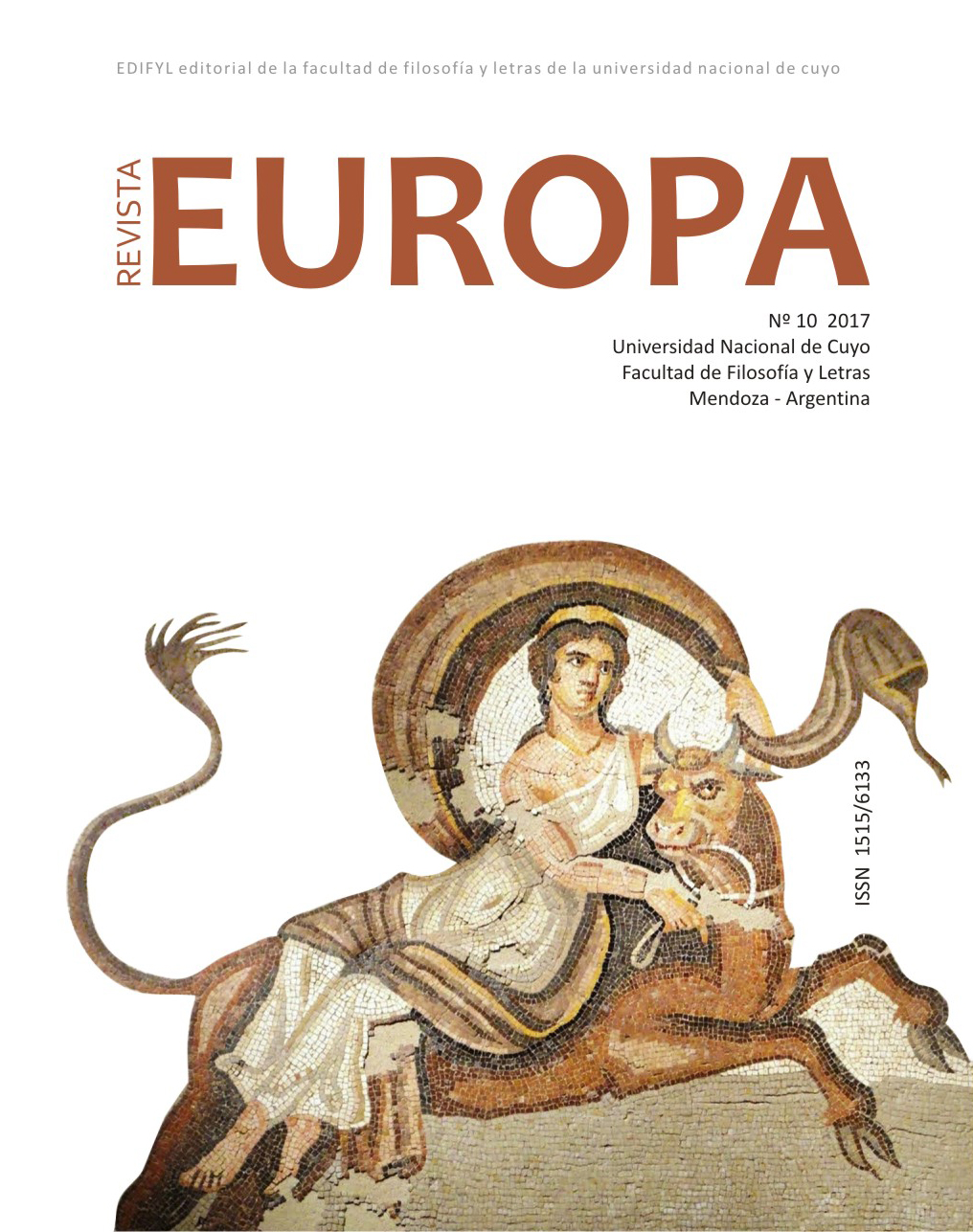"Divided into two parts the affair" Discrepancy around comedies in the Spanish Golden Age
Keywords:
Spanish Theatre, Spanish Golden Age, Lope de Vega, Social history of cultureAbstract
In 17th-century Spain, the representations in the corrals of comedies meant much more than a diversion and therefore provoked a wide controversy around this so Spanish custom, which was transformed into a true "national fever".
From the studies carried out by José Antonio Maravall, AgostinaSarracino and Ignacio Arellano on the controversy surrounding the representations of comedies and subsequent regulations, we propose to make a contribution from a Social history perspective of The current culture that is connects with the 4th Annals. We propose the possibility of identifying possible arguments about the lawfulness or benefits of the representations, from the analysis of the sources published in the collection of sources for the history of the theatre in Spain, and of the famous new art of making comedies of Lope de Vega.
The research works that study the subject usually go from, among other things, the relations between power and culture from a political perspective, so we propose to turn a little attention of the political without disregarding it to try to identify the relations Social and cultural system that contains them.
References
VALVERDE C.,, Andrés M., LÓPEZ PIÑERO, J. M. y otros (1996) El siglo del Quijote (1580-1680). Vol. I Religión. Filosofía y Ciencia. Madrid: Espasa Calpe.
CHARTIER R. (1992) El mundo como representación. Barcelona: Gedisa.
CHARTIER R. La Historia hoy en día: dudas, desafíos, propuestas. En: Olavarri I. y Capistegui F. J. La Nueva Historia Cultural: la influencia del postestructuralismo y el auge de la interdisciplinariedad. Madrid: ed.complutense.
JODELET, D. (1986): «La representación social: fenómenos, concepto y teoría». En S. Moscovici (editor): Introducción a la psicología social. Barcelona: Paidós.
ZAVALETA, Juan de (1983). El día de fiesta por la mañana y por la tarde, 1660, Madrid: Castalia
LOPE DE VEGA Carpio (2003) El arte nuevo de hacer comedia. Alicante: Biblioteca Virtual Miguel de Cervantes. http://www. cervantesvirtual.com/obra/arte-nuevo-de-hacer-comedias-en-este-tiempo--0/
MARAVALL J. A. (1996). La Cultura del barroco. Análisis de una estructura Histórica. Barcelona: Ariel.
MATA IDURAÍN C. La sociedad española aurisecular en el teatro de Antonio de Solís: el amor al uso y el doctor carlino. En: Textos sin fronteras. Literatura y sociedad, II, ed. Hala Awaad y Mariela Insúa, Pamplona, Universidad de Navarra (Ediciones digitales del GRISO), 2010, pp. 133-152.
PFANDL L. (1942) Introducción al estudio del Siglo de Oro. Cultura y costumbres del pueblo español de los siglos XVI y XVII. Barcelona: Ed. Araluce.
NAVARRA, Ramiro de. Los peligros de Madrid. En: Lemir, 20, 2016. http://parnaseo. uv. es/Lemir/Revista/Revista20/textos/04_Peligros_Madrid. pdf
Downloads
Published
Issue
Section
License
Quienes envíen trabajos a la Revista EUROPA, que edita la Asociación de Estudios Interdisciplinarios sobre Europa (ADEISE) de la Facultad de Filosofía y Letras de la Universidad Nacional de Cuyo (Mendoza, Argentina), otorgan automáticamente licencia no exclusiva y sin límite temporal de su manuscrito a dicha publicación. En consecuencia, como la distribución de la citada Revista no tiene finalidad lucrativa sino académica, el autor (los autores) autoriza(n) a la misma la difusión gratuita en formato impreso y medios electrónicos, tanto en red local como por vía internet.
Se establece que:
- Los/as autores/as conservarán sus derechos de autor y garantizarán a la revista el derecho de primera publicación de su obra.
- Los/as autores/as deben adherir a la la Licencia Creative Commons Atribución-NoComercial-CompartirIgual 4.0 Internacional, mediante la cual el autor permite copiar, reproducir, distribuir, comunicar públicamente la obra sin propósitos comerciales, por cualquier medio o formato. También, se pueden generar nuevas obras derivadas, siempre y cuando se cite y reconozca al autor original y su primera publicación en esta revista.
- Los/as autores/as podrán adoptar otros acuerdos de licencia no exclusiva de distribución de la versión de la obra publicada (p. ej.: depositarla en un archivo telemático institucional o publicarla en un volumen monográfico) siempre que se indique la publicación inicial en esta revista.
- Se permite y recomienda a los/as autores/as difundir su obra a través de Internet (p. ej.: en archivos telemáticos institucionales o en su página web) luego de su publicación, lo cual puede producir intercambios interesantes y aumentar las citas de la obra publicada. (Véase El efecto del acceso abierto).




